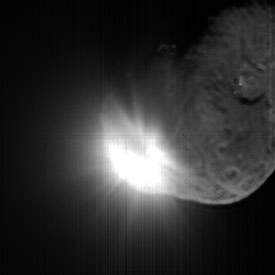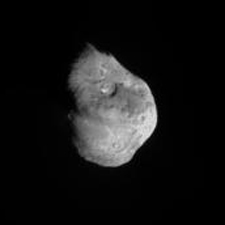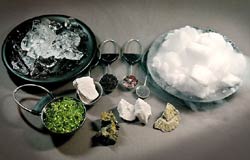
This highly processed image of Comet Tempel 1 shows the initial debris after the spacecraft's impactor collided with the nucleus. The ejected dust shrouded the mothership's view of the resulting impact crater.
Courtesy NASA / JPL / Caltech / University of Maryland.
It has been two months since the Deep Impact spacecraft's impactor slammed into Comet Tempel 1, and astronomers are continuing to learn about the physics of the event, the nature of the excavated debris, and how the experiment's results are changing what they know about comets and the early solar-system conditions in which these ancient relics formed.
In a full day of presentations at this week's American Astronomical Society Division for Planetary Sciences meeting in Cambridge, England, scientists from around the world discussed their latest findings. Here are some highlights:

This image from the impactor's targeting sensor shows the nucleus of Comet Tempel 1 six minutes before the collision. The large impact crater above the comet's center is the first such structure seen on a cometary nucleus.
Courtesy NASA / JPL / Caltech / University of Maryland.

This somewhat whimsical photo shows the various ingredients that make up a comet as identified in spectra of Comet Tempel 1 taken by NASA's Spitzer Space Telescope. These 'comet soup' ingredients are (on plates, from left to right): ice and dry ice; (in measuring cups, from left to right) olivine, smectite clay, polycyclic aromatic hydrocarbons, spinel, metallic iron; (on table in the front, from left to right) the silicate enstatite, the carbonate dolomite, and the iron sulfide marcasite.
Courtesy NASA / JPL / Caltech / Robert Hurt (SSC).
 0
0
Comments
You must be logged in to post a comment.